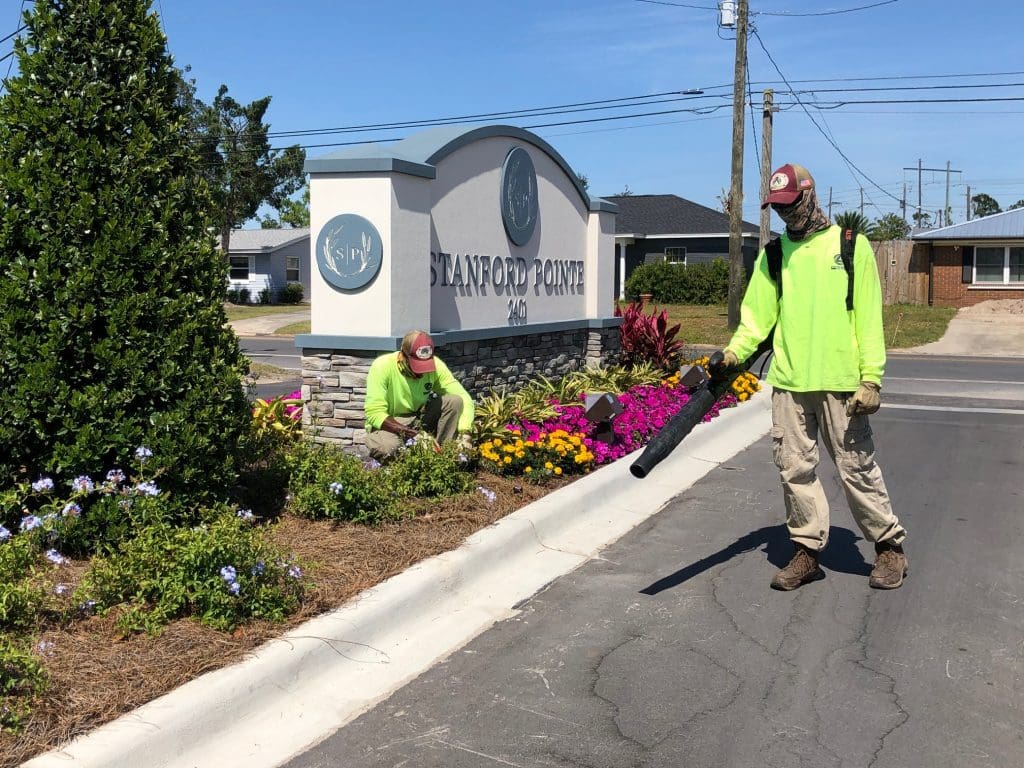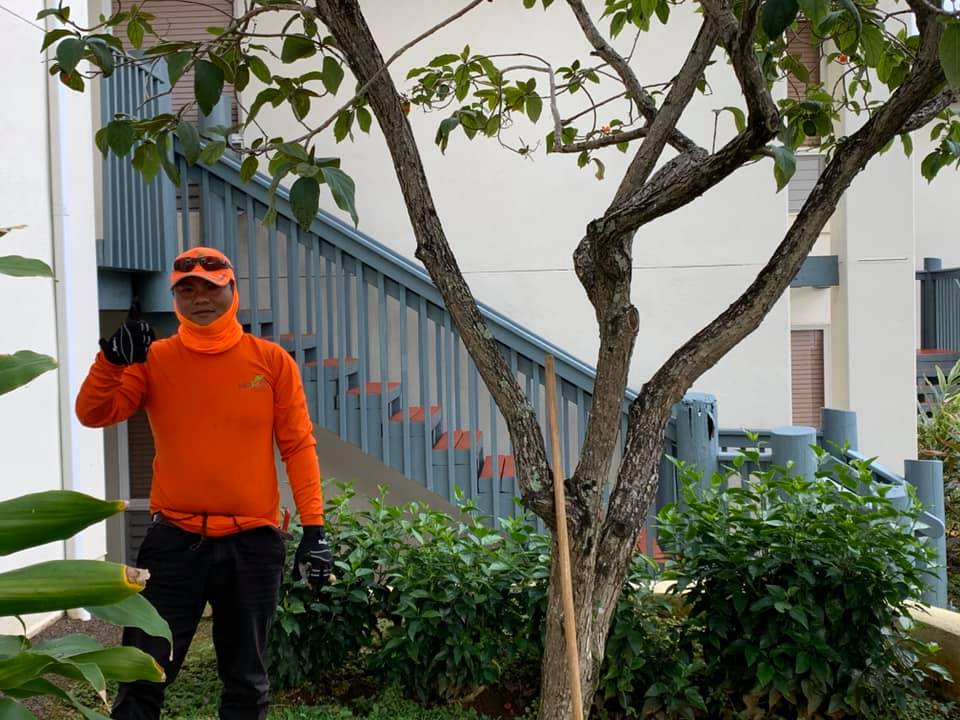
The impact the shelter-in-place orders had on NALP members and their commercial clients has varied greatly. As parts of the country start to open things back up, here’s what businesses that offer commercial maintenance are seeing in the field.
Which Customers Are Cutting Back
For No Ka Oi Landscape Services, based in Hanapepe, Hawaii, they have lost around 40 percent of their business due to their tourism-based economy. Currently, anyone who arrives in Hawaii is subject to a 14-day quarantine where they must stay in their designated quarantine location, which is typically their hotel room.
“They can’t go to the restaurant, they can’t go anywhere,” says Abby Santos, owner of No Ka Oi. “The hotels are not going to open until that quarantine rule is not in effect.”
Similarly, Southeastern Outdoor Management, based in Panama City, Florida, has seen customers cut back as one of their largest maintenance contracts relies on bed tax money from hotels and rentals to fund the maintenance of County-owned properties and the state shutdowns have stifled the number of visitors arriving.
“Typically, we pine straw this contract and put in new annuals for the spring season,” says Katy Harrell, LIC, president of Southeastern Outdoor Management. “Both of these items were cut from the budget this year, and we were instructed not to install them. Most of our clients have kept us on for standard maintenance but have cut any additional add-on items so we are performing bare bone services.”
Lawn Management Company, Inc., based in Houston, Texas, has seen about 7 percent of their clients cease operations or cut back on services and these are primarily retail centers, restaurants and hotels.

“Typically, these have been deemed non-essential businesses and the future lack of cash flow has crippled their ability to maintain the current level of services,” says Randy Ferrari, president and COO for LMC.
Meanwhile for Buffalo, New York-based Elbers Landscape Service, Inc., president Jim Hornung Jr., LIC, says cutbacks have not been widespread, and those who have cut back on services are only doing a temporary reduction.
“It’s more schools than anything else, the commercial stuff right now has been pretty consistent,” Hornung says. “We’ve lost a couple of clients because they’re not operating because they’re tourist attractions.”
Brian Avery, president of LandPro, Inc., based in Bardstown, Kentucky, says its been a mixed bag for him. Of the industrial warehouses his company does the maintenance for, half are food-grade and are running full throttle, while the other half are suppliers for Ford and Toyota, which he says are ghost towns.
“We do service a handful of flex space or retail-style facilities and those have cut back on services meaning they’ve done a reduction in mowing, and a reduction in turf applications,” Avery says. “So instead of doing three fertilizations, we’re only doing one.”
Santos says one customer has let go of all their groundskeeping companies and has their own employees taking care of the grounds rather than furloughing them. Hornung has noted a few of his clients have also tasked their own employees with landscape maintenance.
Hornung says they’ve held conference calls to see what their customers can tolerate for the time-being while trying to cut back. Likewise, Santos says if clients ask for their monthly fee to be reduced, they will work with them.
“They say, ‘We’re grateful for you working with us,’” Santos says. “That’s really rewarding to hear when people are grateful for that. We’re all in this together.”
New challenges
As landscape maintenance companies adjust to the new normal with businesses reopening, there are a number of new challenges around how to operate safely and effectively.
“Our biggest challenge moving forward will be trying to find a balance in the number of employees in our trucks and trying to make our customers who are back on their commercial properties maintain the 6’ social distancing requirement,” Harrell says.

Ferrari says new business development has been an issue but they are looking at entering other markets that haven’t been affected as severely, such as master-planned communities.
“In addition, enhancement opportunities are not nearly as prevalent as history has shown,” Ferrari says. “Managing the ‘fear factor’ is a new concept that we have to consider.”One of the challenges Santos says their company is facing is right now communicating with both customers and crews about the level of service that will be provided if they’ve cut back.
“That takes a little bit of finesse to get the guys to realize we’re not expecting you to do the work of a full crew if you’re working on a smaller crew now,” Santos says. “It’s a big balancing act to keep the customers happy and keep the employees happy. It’s just tons of communication.”
Santos says they’ve made a number of changes in the way they work to ensure their workforce stays healthy as well. Hornung says a lot of his clients been asking for their safety plan and they’ve been communicating their plans, but he says it is not set in stone, as things keep evolving.
“I think people have been very understanding and the more and the better that we’ve communicated, the more comfortable people have been with the process,” Hornung says.
Avery says one client has requested that before any of his employees come onsite that he emails a health check form that certifies the employee isn’t sick.
“We take those with us to the facility and then the security guard at the gate checks our temperature before entering,” Avery says. “We’re to carry that form around with us, while we’re working in case somebody wants to come up and ask to see our health check form.”
Looking to the Future
“I believe we are still in the ’wait and see’ mode,” Ferrari says. “Once there is an atmosphere that the worst is behind us, then I feel we will see an uptick in activity.”

Photo: No Ka Oi Landscape Services
Hornung says while right now they haven’t been severely affected currently, he does predict this to drastically impact their business in the winter.
“I think even in the best-case scenario, there’s going to be a large percentage of the work population that continues to work remotely.” Hornung “Therefore, they won’t be coming into the large complexes and parking lots and downtown parking ramps and all that kind of stuff. I anticipate it to take a significant bite out of our snowplowing revenue.”
Harrell says while they have enjoyed the lack of traffic over the past few months, she predicts to see an influx in traffic as people look to return to beaches nearby.
“We feel certain as revenues continue to start back up, customers will add back on items like pine straw and annuals,” Harrell says.

